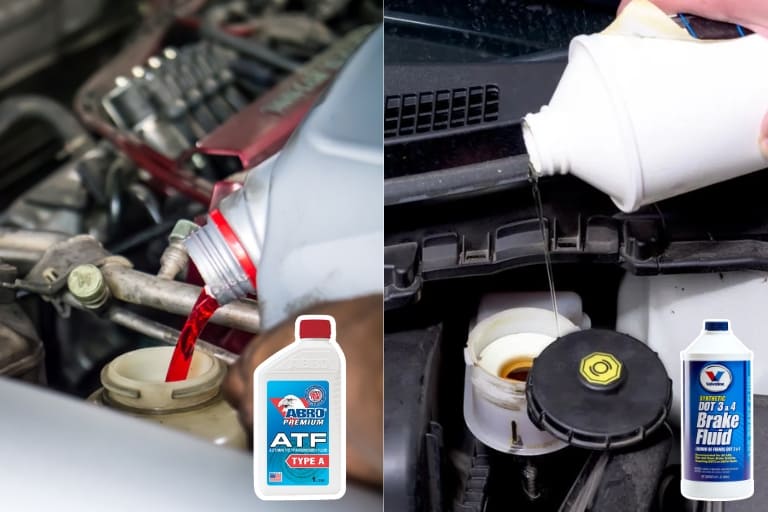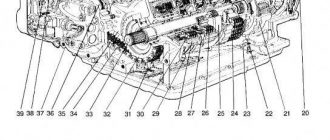Car Transmission Fluid vs. Brake Fluid: Understanding the Differences
Introduction:
In the intricate machinery of a car, there are two fluids that play crucial roles in the vehicle’s operation and safety: transmission fluid and brake fluid. While they share some similarities, these fluids serve distinct purposes and differ significantly in their composition, functions, and maintenance requirements. This article aims to provide a comprehensive overview of the differences between car transmission fluid and brake fluid, empowering you with the knowledge to ensure your vehicle’s optimal performance and longevity.
1. Composition and Properties:
Transmission Fluid:
– Consists of a blend of base oils and additives
– Primary components include petroleum-based or synthetic oils
– Additives enhance performance by reducing friction, improving oil flow, and preventing wear
Brake Fluid:
– Made primarily of polyglycol ethers or mineral oils
– Contains specific additives to prevent corrosion, lubricate seals, and enhance the boiling point
2. Functions:
Transmission Fluid:
– Lubricates moving parts within the transmission (gears, bearings, shafts)
– Transfers power from the engine to the transmission, resulting in gear changes
– Helps dissipate heat generated during transmission operation
Brake Fluid:
– Transmits hydraulic pressure from the master cylinder to the brake calipers or wheel cylinders
– Actuates the brake pads or shoes, applying friction to the rotors or drums to stop the vehicle
– Prevents air or moisture from entering the brake system, which can compromise its effectiveness
3. Color and Consistency:
Transmission Fluid:
– Varies in color depending on the manufacturer and type, typically reddish or amber
– Consistency is thicker and less viscous than brake fluid
Brake Fluid:
– Clear or amber in color, indicating its high level of transparency
– Consistency is thinner and more viscous, enabling it to flow easily through narrow brake lines
4. Maintenance and Replacement:
Transmission Fluid:
– Requires regular maintenance and replacement, as it can degrade over time
– Replacement intervals vary depending on vehicle manufacturer and driving conditions, but typically range from 30,000 to 60,000 miles
– Flushing the transmission is recommended to ensure complete removal of old fluid and any contaminants
Brake Fluid:
– Has a longer service life compared to transmission fluid
– Typically requires replacement every two to three years or every 30,000 to 50,000 miles
– Regular inspections are crucial to monitor fluid level and condition
5. Consequences of Using the Wrong Fluid:
Using the wrong fluid in either the transmission or brake system can have severe consequences:
– Transmission: Transmission fluid specifically designed for your vehicle ensures optimal performance and protection. Using the wrong type can lead to:
– Slipping gears
– Difficulty shifting
– Transmission damage
– Brakes: Brake fluid is essential for hydraulic brake actuation. Using the wrong type can cause:
– Reduced braking power
– Loss of braking ability
– Corrosion and damage to the brake system
6. Handling and Storage:
Transmission Fluid:
– Dispose of used transmission fluid properly at a designated recycling facility
– Store new fluid in a clean, airtight container in a cool and dry location
Brake Fluid:
– Brake fluid is highly corrosive and should be handled with care
– Wear gloves when handling brake fluid
– Dispose of used brake fluid appropriately at a designated recycling facility
– Store new fluid in its original packaging and avoid exposure to moisture and contamination
7. Warning Signs of Fluid Problems:
Transmission Fluid:
– Dark or discolored fluid
– Burnt smell
– Slippage or difficulty shifting gears
Brake Fluid:
– Leaking or low fluid level
– Spongy or soft brake pedal
– Extended stopping distance
Conclusion:
Car transmission fluid and brake fluid are vital fluids that perform distinct and crucial functions in a vehicle. Understanding their differences in composition, functions, maintenance, and handling is essential for ensuring the smooth operation and safety of your car. By regularly servicing and maintaining these fluids, you can enhance the performance, longevity, and reliability of your vehicle. Remember, using the correct fluid is paramount for optimal vehicle operation; incorrect fluid usage can have severe consequences.






